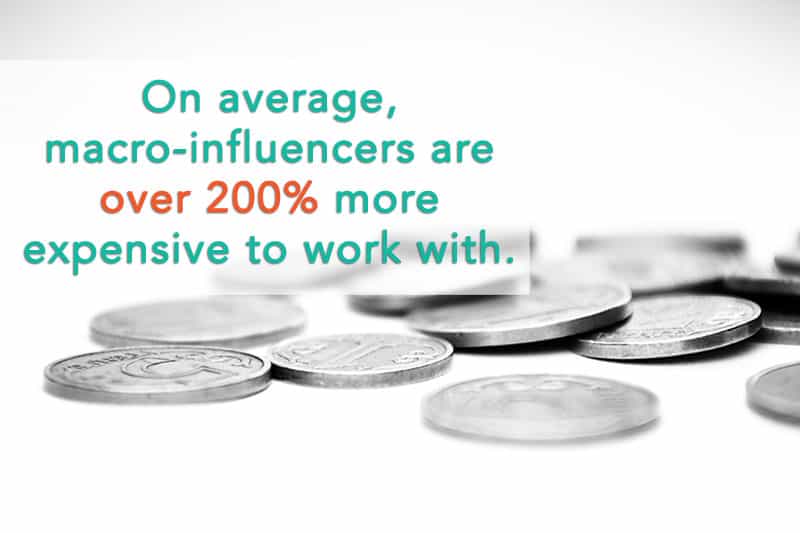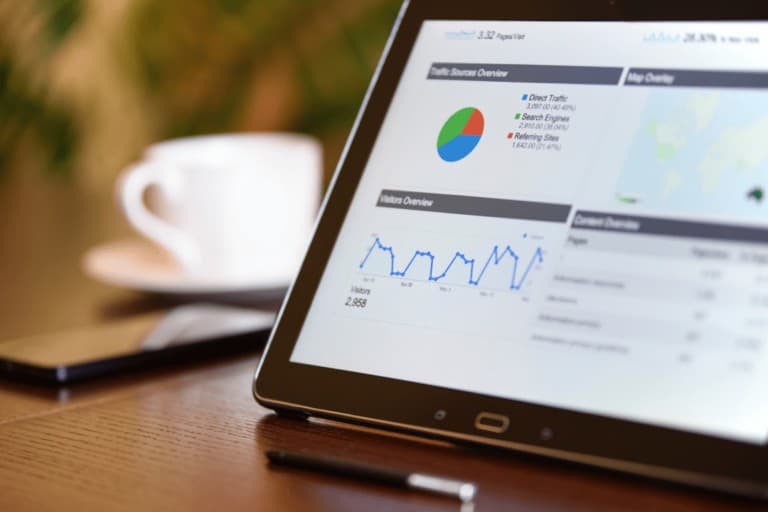Making the Case for Working With Micro-Influencers
By Tawny Bertolozzi and Dalene Heck
Contrary to what their name suggests, micro-influencers pack a big punch in what they can bring to an influencer campaign. Not only are they significantly more cost-effective than a macro-influencer, but micro also often means more niche, and we have previously discussed how niche can lead to more success than overall reach.
When comparing the virtues of working with micro versus macro-sized content creators, the biggest question from clients is with regards to ROI. At the end of the day, who will generate more sales? While the impressive reach of a macro-influencer cannot be overlooked, it has been documented that large numbers lead to more diversity, which means that the audience is typically less focused and may be following the influencer for disparate reasons. Thus reach isn’t guaranteed to lead to a positive ROI, especially if you have a very specific product or service you are looking to market.
Conversely, micro-influencers have an engaged audience who are typically looking exactly for the type of content this creator produces. Higher engagement rates usually follow due to the niche focus. It’s like shooting an arrow (micro-influencer) versus a shotgun filled with pellets (macro-influencer). Both can be effective at hitting a target but one is more succinct in the aim.
There is more to be said about the perks of micro-influencers so we are going to dive deeper into making the case for working with them.
Micro-Influencers Can Fit Smaller Budgets
We recently undertook a study utilizing a significant amount of data (we reviewed 537 influencer applications from 29 different countries!) collected from our Creator House campaigns to decipher trends and average costs based on location and audience size (download it HERE).
In our experience via the Creator House programs, the average cost for a travel campaign with a macro-influencer in the 100,000 – 250,000 follower range was 222% more than with micro-influencers. And 369% more for those creators with greater than 250,000 followers.
This is not to disparage working with macro-influencers – they can certainly serve a purpose in a broader marketing strategy. But especially for those who are working with a smaller budget, choosing to work with the “targeted arrow” is also more financially viable.
Smaller Content Creators Often Produce Higher Engagement
A study about Instagram engagement revealed an interesting trend: As an influencer’s number of followers increases, their number of likes and comments from followers decreases. In fact, out of five million total Instagram posts, those with less than 1,000 followers generally received likes on their posts 8% of the time. This can be compared to users with 10 million+ followers who received likes only 1.6% of the time. (That makes the smaller content creators 500% more effective!)
This could be attributed to a number of factors but the most common reasoning is what we mentioned above. Micro-content creators are more niche than their counterparts, and niche content results in higher engagement because of how focused the audience is.
They Can Boost a Brand’s Authenticity
We’ve also seen how some studies have shown that micro-influencers can inspire greater trust than bigger names. Did you know that 70% of millennial consumers are influenced by the recommendations of their peers in buying decisions?
Micro-influencers infuse a personality that their followers resonate with and are supremely loyal to. People feel like they know them and so having that person represent a brand leads to more trust and authenticity because, in a consumer’s eyes, this person they “know” would genuinely stand behind what they are promoting.
Micro-Influencers are (Usually) not High Maintenance
There is typically a bad apple in every bunch, and unfortunately, we have been forced to create an HMI “Never Again” folder. But that can be expected when working with a diverse group of people from all over the world.
For the most part, the content creators we have collaborated with have been awesome, and there are many we work with repeatedly (no drama + quality content = instant spot on our shortlist). However, the correlation between bad experiences and a higher following count cannot be ignored.
The Possibilities are Endless
According to this report, 15.7% of Instagram users have between 1,000 and 10,000 followers. Doing the math compared to the one BILLION overall Instagram users, that means that there are over 150 million micro-influencers to choose from!
And you can expect to find these micro-influencers in just about any category imaginable. From craft beer to kittens and beyond! In our experience: The more niche, the better.
Bear in mind that we have uncovered many ways influencers cheat the system to look like they have more followers and/or engagement than they actually do, so take all numbers with a grain of salt. We recommend always completing a thorough vetting process on any potential influencer (even if they are micro), to help weed out any shady practices. As mentioned, there is good money to be made from being an influencer and there are many instances of tricky tactics to inflate numbers. No matter if it’s a micro, macro, or any influencers in between, do your due diligence to ensure that you are partnering with someone whose audience is what they say they are, and compatible with your target.
In Conclusion
Micro-influencers continue to lead the effective charge for influencer marketing.
Utilizing their skills and assets to help your brand is a no-brainer. Don’t get lost in the hype of a large following that will blow a budget and may or may not lead to anything substantial. We have seen the evidence in action in favour of micro-influencers time and time again and they will always be our preferred go-to.
You may also want to read:
How to Measure ROI in Influencer Marketing
How to Work with Content Creators on a Limited Budget
11 Creative Ways to Work with Influencers: Going Beyond the Press Trip









